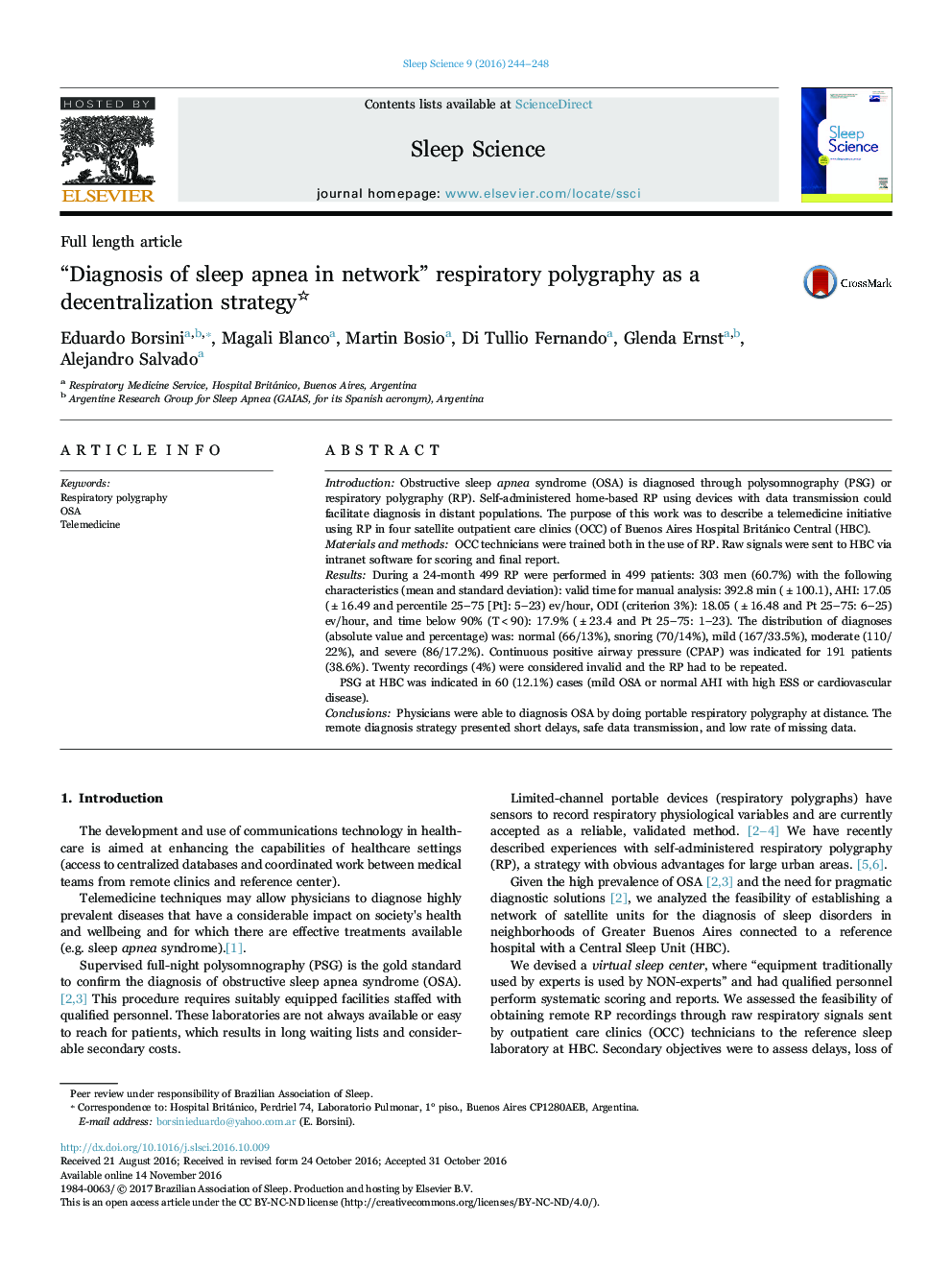| Article ID | Journal | Published Year | Pages | File Type |
|---|---|---|---|---|
| 5621759 | Sleep Science | 2016 | 5 Pages |
IntroductionObstructive sleep apnea syndrome (OSA) is diagnosed through polysomnography (PSG) or respiratory polygraphy (RP). Self-administered home-based RP using devices with data transmission could facilitate diagnosis in distant populations. The purpose of this work was to describe a telemedicine initiative using RP in four satellite outpatient care clinics (OCC) of Buenos Aires Hospital Británico Central (HBC).Materials and methodsOCC technicians were trained both in the use of RP. Raw signals were sent to HBC via intranet software for scoring and final report.ResultsDuring a 24-month 499 RP were performed in 499 patients: 303 men (60.7%) with the following characteristics (mean and standard deviation): valid time for manual analysis: 392.8 min (±100.1), AHI: 17.05 (±16.49 and percentile 25-75 [Pt]: 5-23) ev/hour, ODI (criterion 3%): 18.05 (±16.48 and Pt 25-75: 6-25) ev/hour, and time below 90% (T<90): 17.9% (±23.4 and Pt 25-75: 1-23). The distribution of diagnoses (absolute value and percentage) was: normal (66/13%), snoring (70/14%), mild (167/33.5%), moderate (110/22%), and severe (86/17.2%). Continuous positive airway pressure (CPAP) was indicated for 191 patients (38.6%). Twenty recordings (4%) were considered invalid and the RP had to be repeated.PSG at HBC was indicated in 60 (12.1%) cases (mild OSA or normal AHI with high ESS or cardiovascular disease).ConclusionsPhysicians were able to diagnosis OSA by doing portable respiratory polygraphy at distance. The remote diagnosis strategy presented short delays, safe data transmission, and low rate of missing data.
